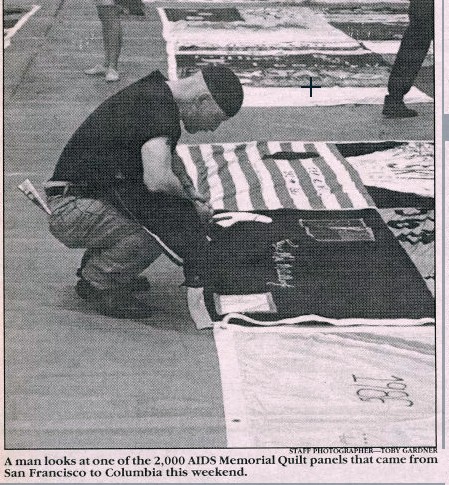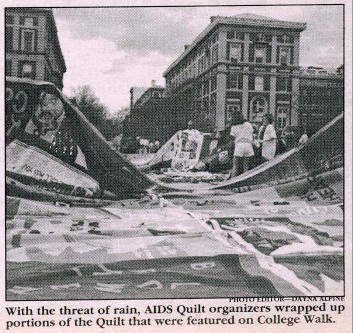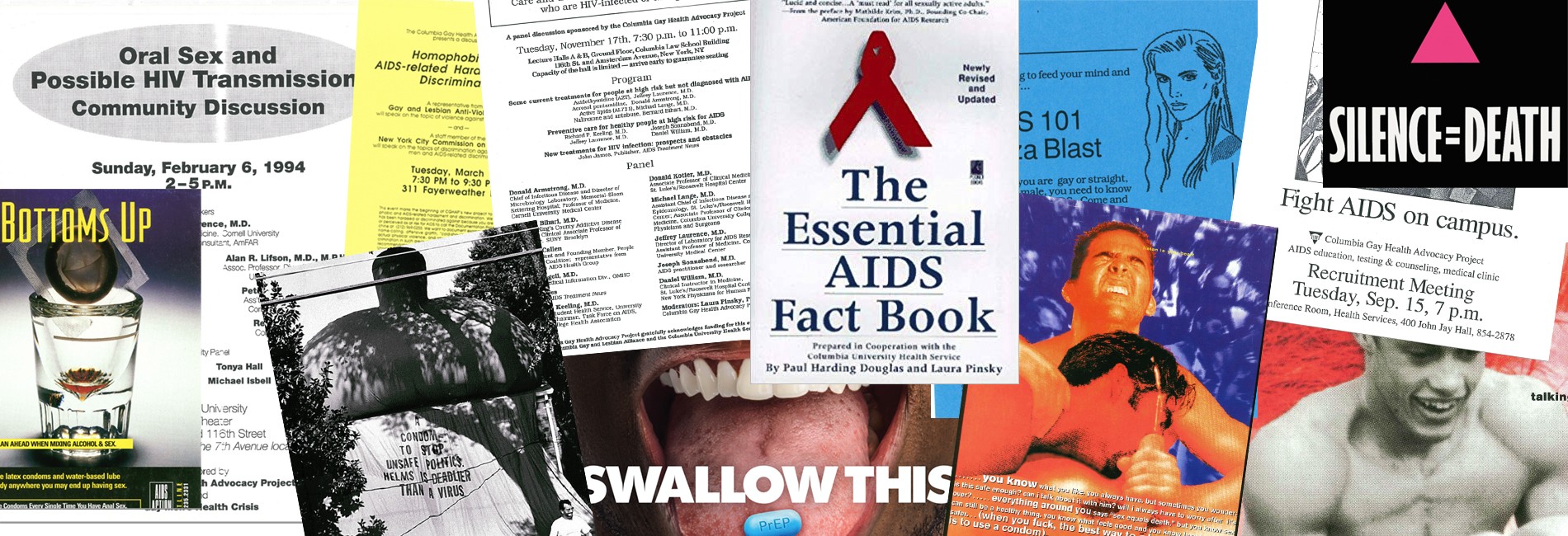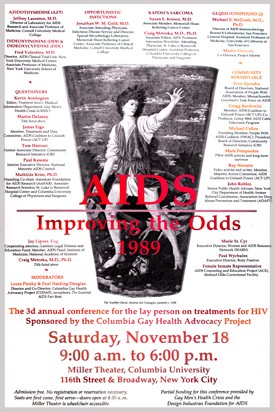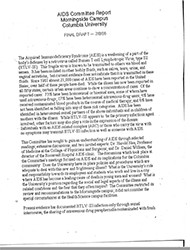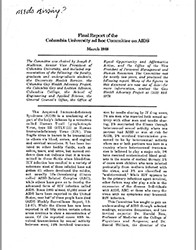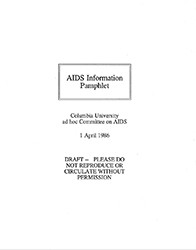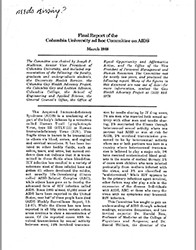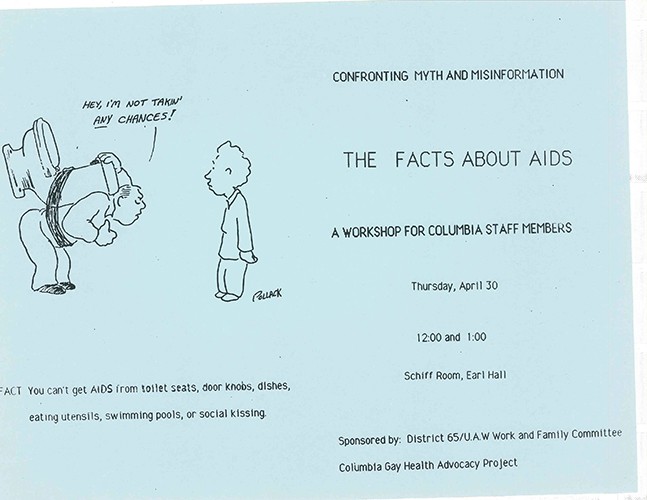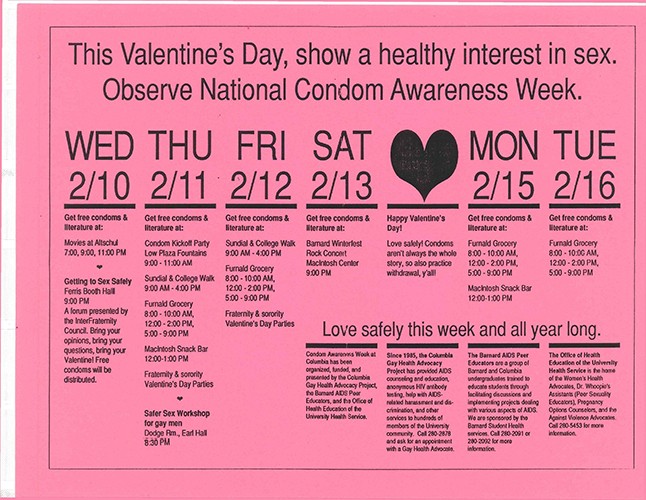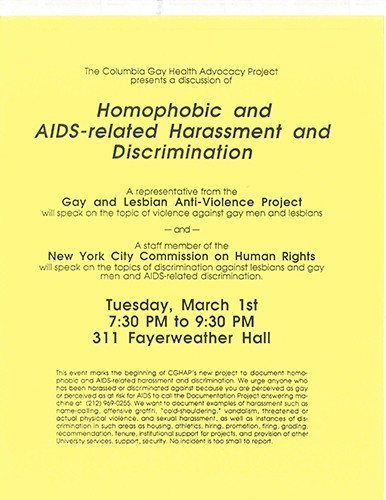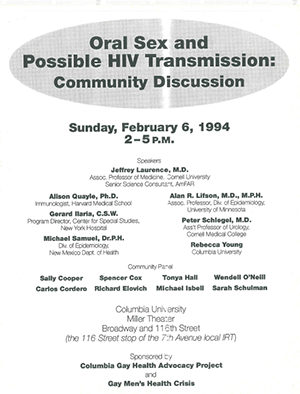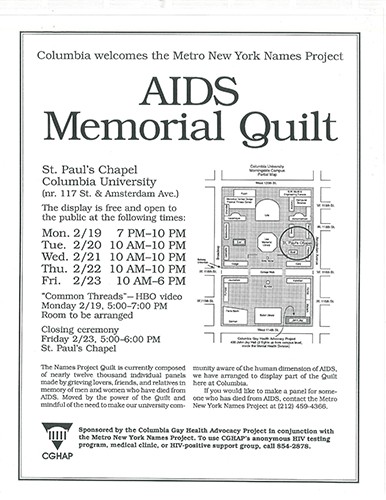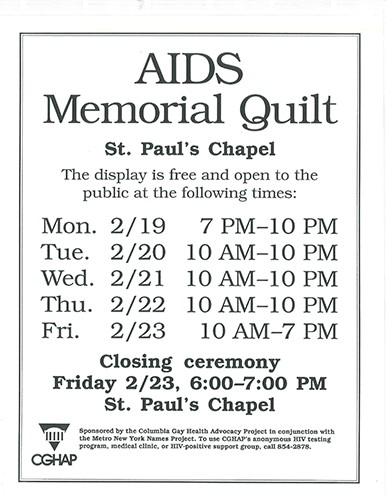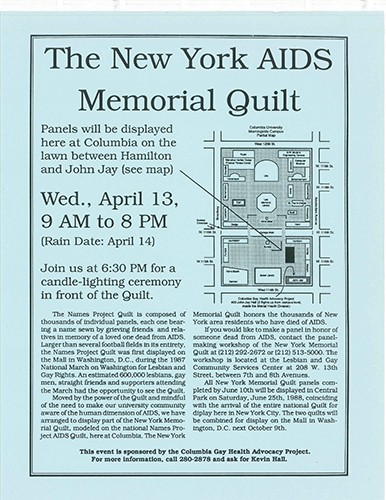GHAP Documentation, Correspondence, and Promotional Items
Slowing the epidemic and its impact at Columbia meant spreading the facts, having direct discussions, providing counseling and support, and making it sexy to practice safer sex.
Below are some of the documents that have been saved through the years regarding GHAP's founding, research and activism, and promotions for the events the group held on Columbia's campus.
If you have any documentation that you think belongs in the archive, please contact us.
Columbia AIDS Committee Report
At Columbia, an employee sued the University in 1983, citing employment discrimination due to perceived HIV status. This led two years later to the formation of a University Committee on AIDS, bringing together representatives from various schools and administrative departments, with the intention of creating a university-policy on AIDS. On this committee were Paul Harding-Douglas, a gay graduate student studying computer science, and Laura Pinsky, at the time a new employee of Columbia’s counseling service. The two would co-found the Gay Health Advocacy Project (GHAP) in October of 1985.
Below are the reports that resulted from the AIDS Committee's work, as well as an AIDS Information Pamphlet which was created largely from research conducted by Laura and Paul and that was marketed nationwide as a resource. It would serve as the basis for The Essential HIV/AIDS Fact Book that Laura and Paul would eventually publish.
GHAP Behind the Scenes
Documents related to formation of GHAP, including requests for funding and proposed curriculae, as well as meeting notes, plans and other materials.
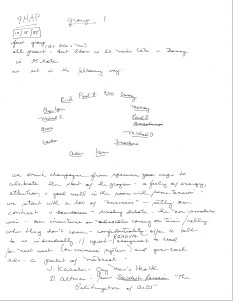
The notes read, “We drink champagne from specimen cups to celebrate the start of the program—a feeling of energy, attention, and good will in the room with some tension.”
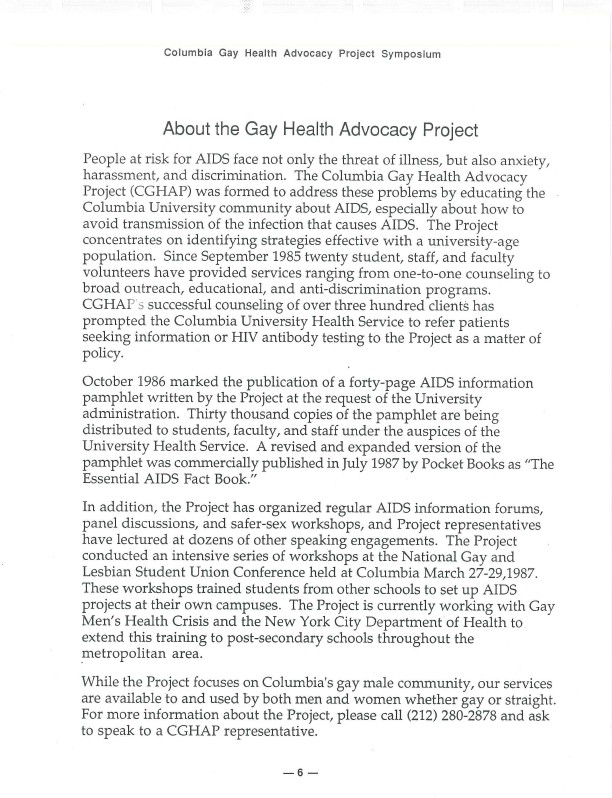
A draft of GHAP's mission statement.
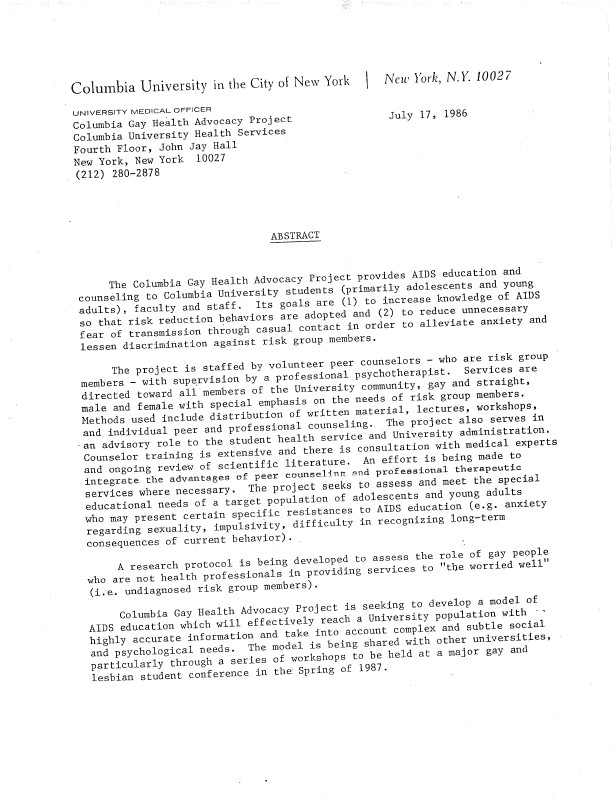
An abstract used to gain support for GHAP with University administrators.
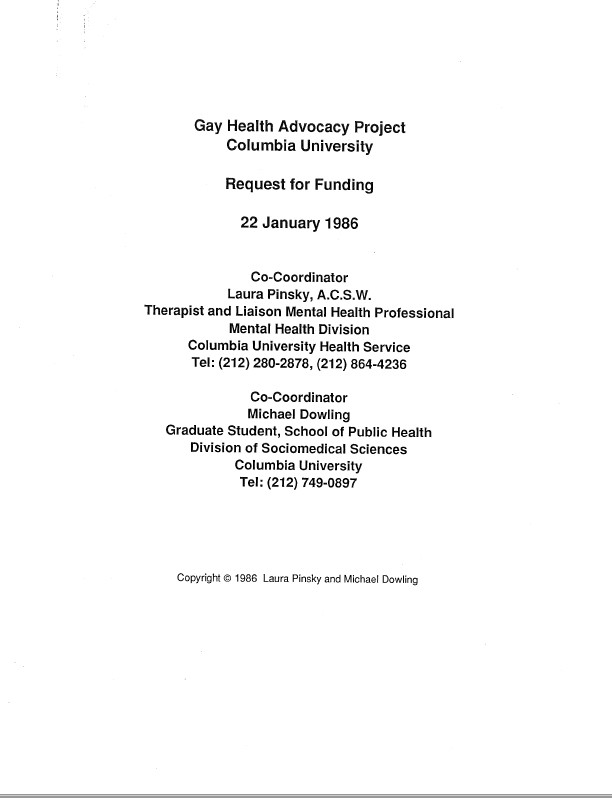
A request for funding GHAP submitted to the University.
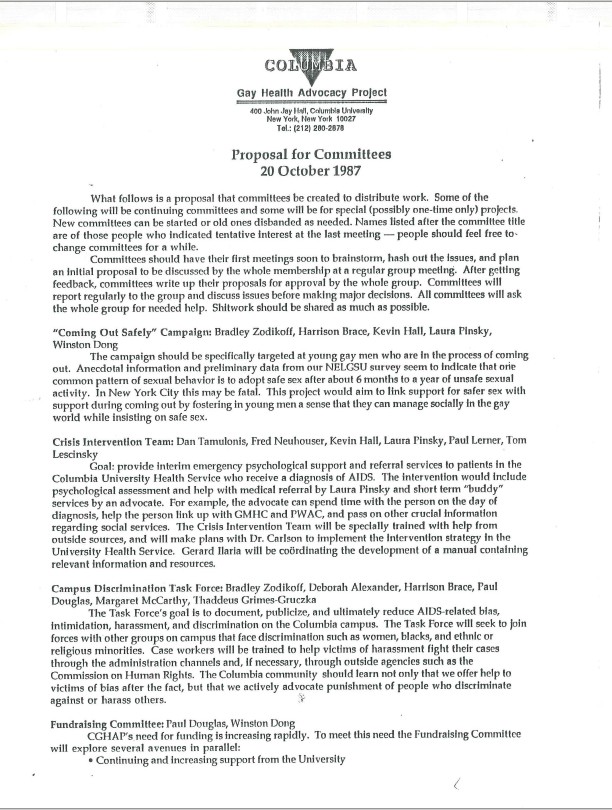
A description of the first committees formed within GHAP. Committees would help GHAP pursue multiple goals more efficiently.
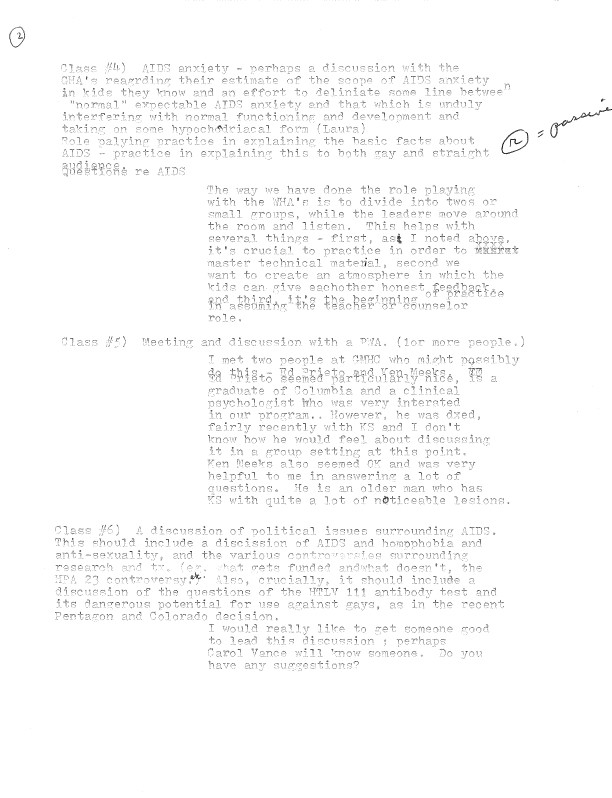
Laura Pinsky's draft of various education initiatives that she felt GHAP should undertake.

The team discusses team goals - where are we going?
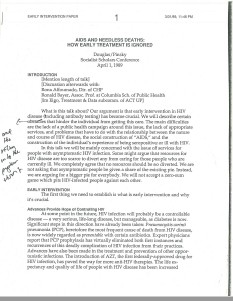
This talk on early AIDS treatment was delivered by Laura Pinsky and Paul Harding Douglas at the Socialist Scholars Conference.
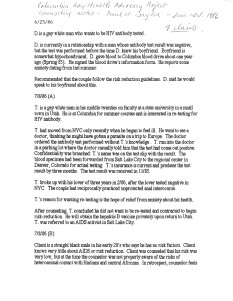
Paul Harding Douglas' notes from counseling sessions—June to October, 1986.
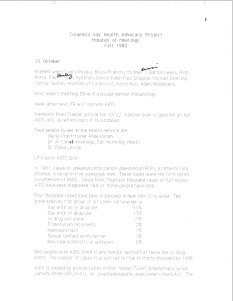
These meeting notes provide a detailed account of the overview of AIDS that Laura Pinsky would delivery when explaining the disease to others. The idea was to pass on the knowledge to the rest of the team to help disseminate.
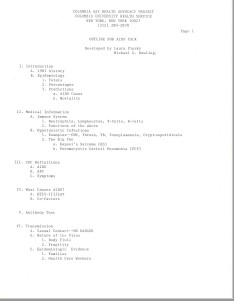
This outline for an AIDS talk, with notes for commentary afterwards, was developed by Laura Pinsky and Michael Dowling.
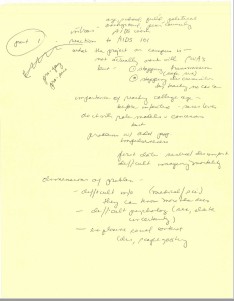
Handwritten notes regarding a GHAP training.
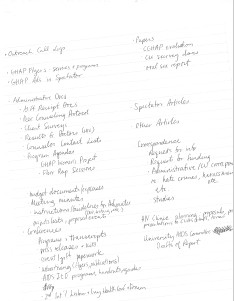
A list of articles, publications, and events.
Student Communications, Questionnaires & Forms
Copies of communications about AIDS sent to students, questionnaires from student education sessions, and a form used to register students for counseling.

A letter sent to students announcing specialized care for HIV provided by the Columbia Health Service.

A questionnaire used with students in one of GHAP's Floor Talk sessions in the early 90's.
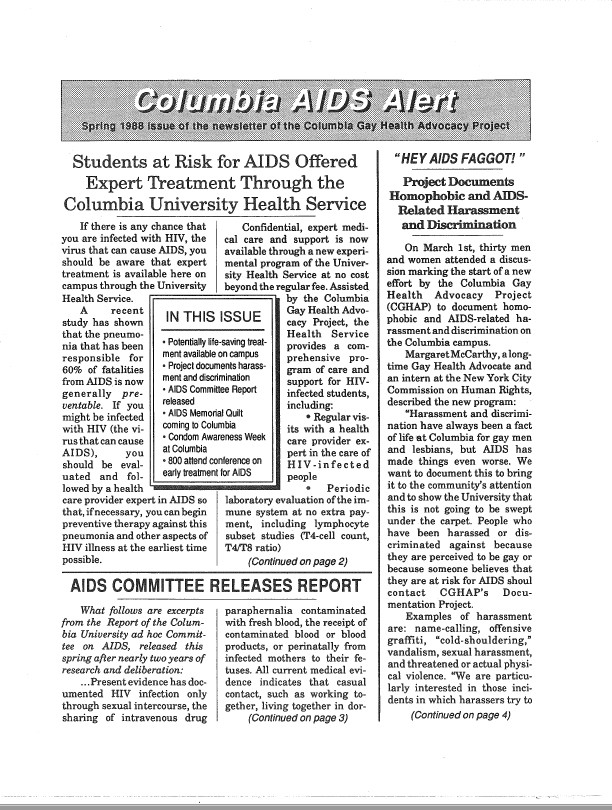
An issue of the Columbia AIDS Alert Newsletter that GHAP produced, covering HIV treatment at Columbia, and a documentary project about the stigma surrounding HIV, called "Hey AIDS Faggot!", among other topics.

A flow chart used to detail the responsibilities of the GHAP Advocate, HIV Clinic Practitioner, and HIV Clinic Counselor in terms of providing holistic care for students with HIV.
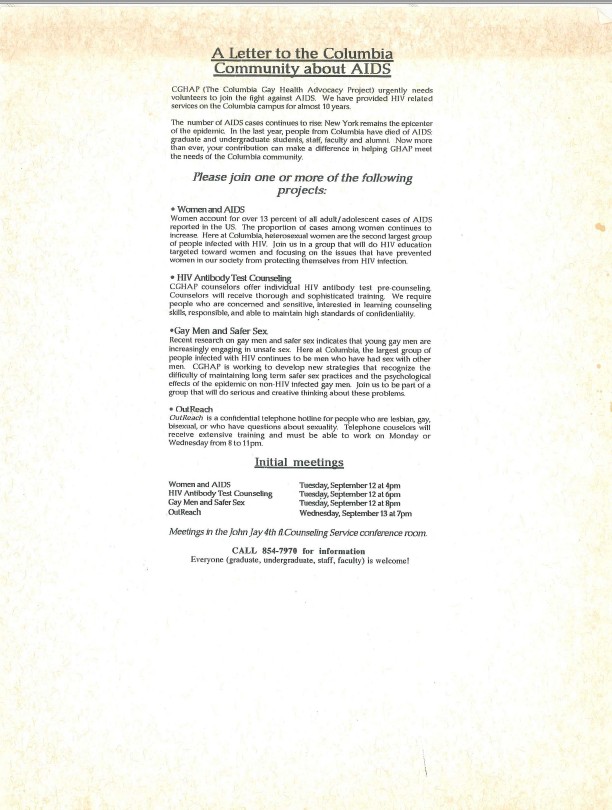
A letter sent to all students about AIDS support groups on campus and how to join them.
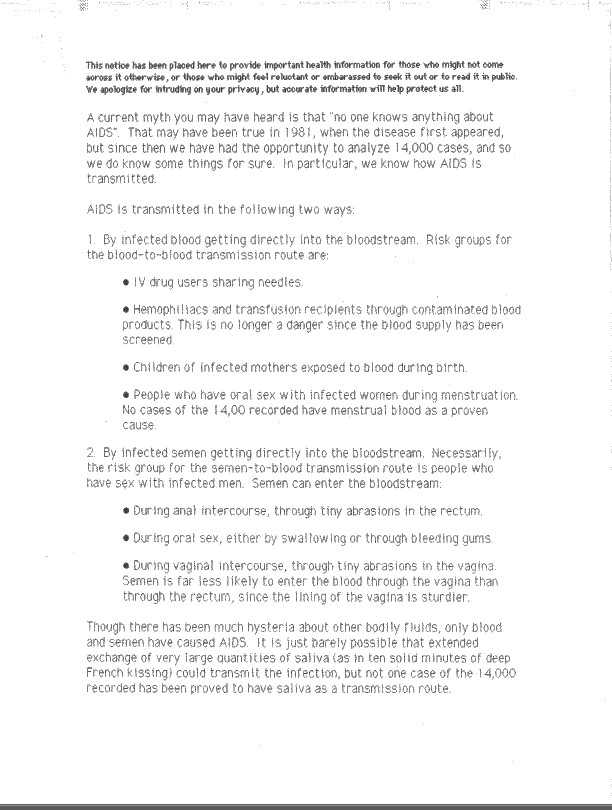
A notice provided to all Columbia students that debunked myths and provided facts about HIV transmission.
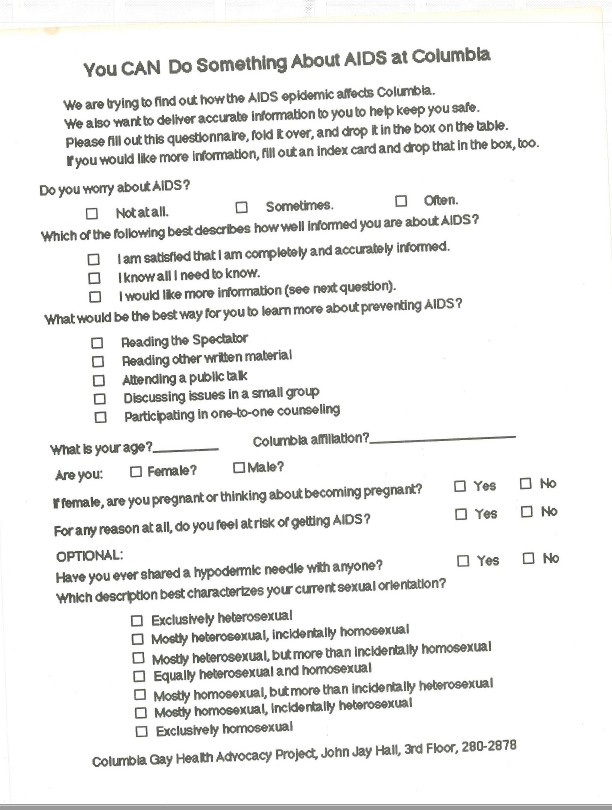
A questionnaire that GHAP sent out to students to gather information about how AIDS was affecting students and campus life.
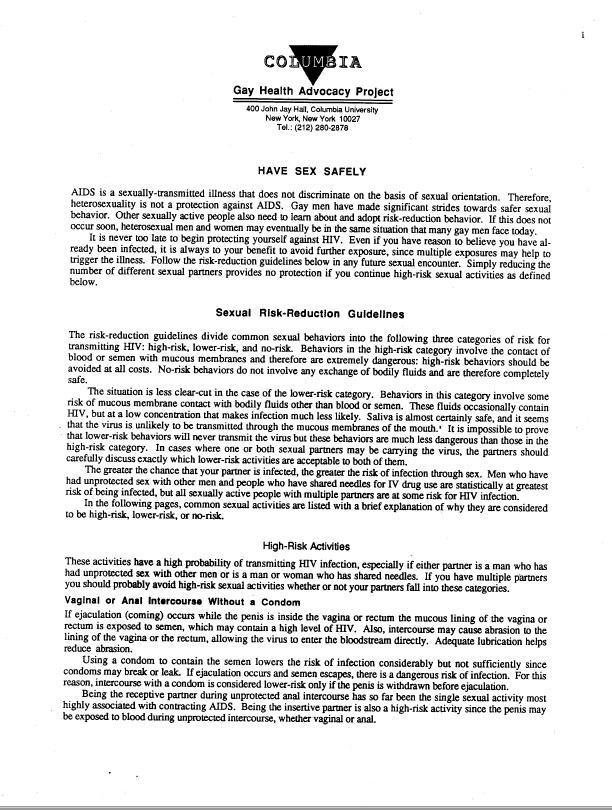
A document sent to Columbia students detailing transmission risks and providing guidelines for safer sex.
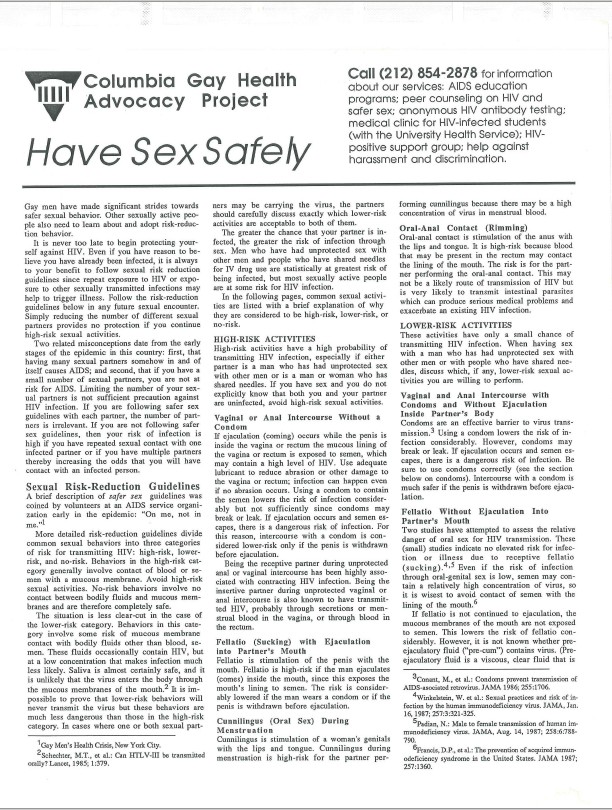
A pamphlet compiled for students providing clear guidelines and factual information about risk reduction and safe sex.
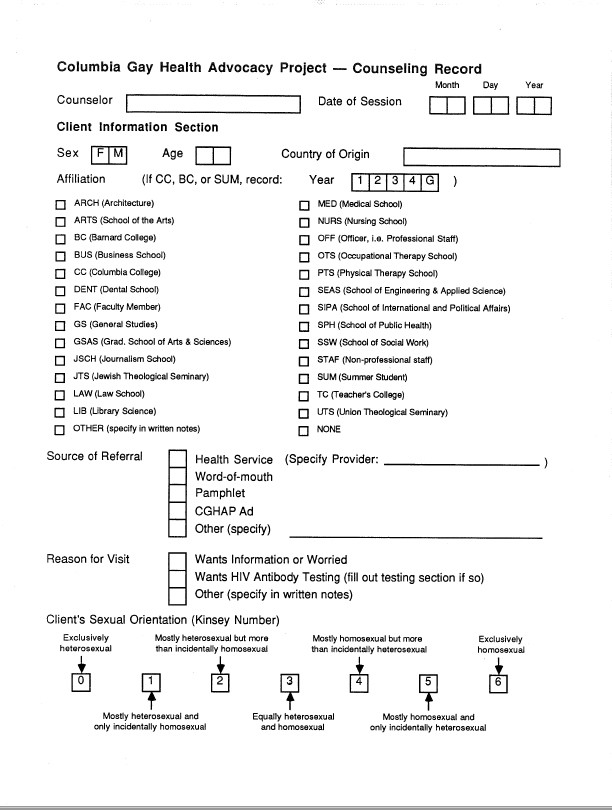
A sample of the form GHAP used to register students for counseling and treatment.
Education & Awareness Flyers and Posters
In addition to student counseling and HIV testing, student education and awareness was one of the primary goals of GHAP at Columbia.
Below are some of the posters, flyers, and other advertisements the team used over the years to raise awareness and encourage students to attend events.
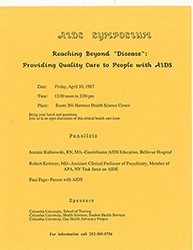
A flyer for an AIDS Symposium, hosted in 1987 by GHAP, the Columbia School of Nursing, and Columbia Student Health Services.
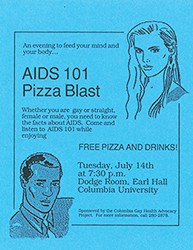
A flyer advertising an AIDS awareness and education session provided by GHAP. It offered free pizza to create a relaxed atmosphere but also to help encourage attendance.
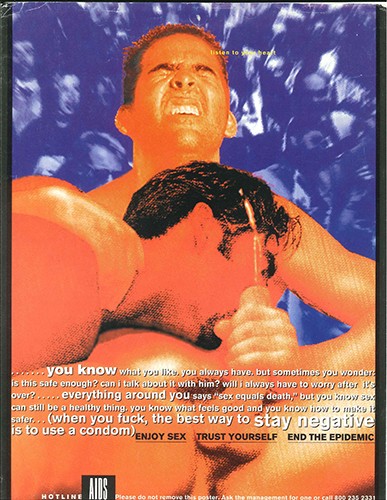
Designed and promoted by the AIDS Action Committee, these posters' graphic images and topics captured student attention and helped spread important information.
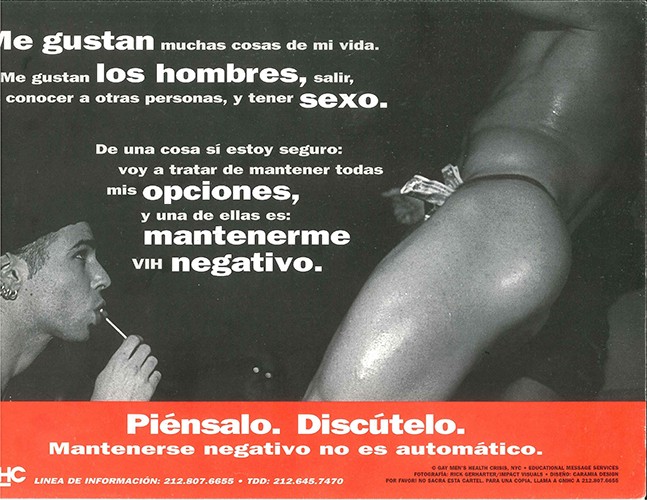
Designed and promoted by the AIDS Action Committee, these posters' graphic images and topics captured student attention and helped spread important information.
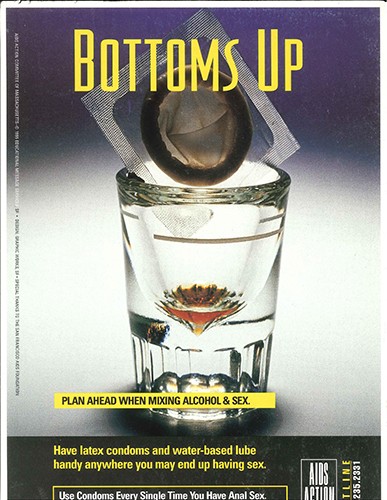
Designed and promoted by the AIDS Action Committee, these posters' graphic images and topics captured student attention and helped spread important information.
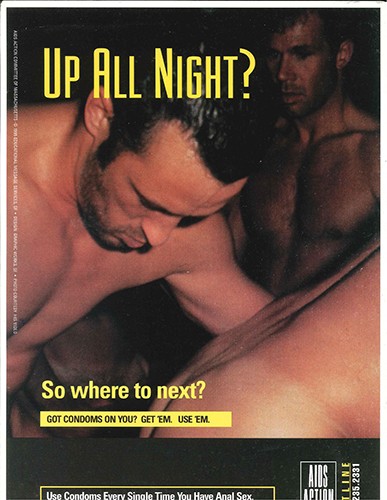
Designed and promoted by the AIDS Action Committee, these posters' graphic images and topics captured student attention and helped spread important information.

Designed and promoted by the AIDS Action Committee, these posters' graphic images and topics captured student attention and helped spread important information.

Designed and promoted by the AIDS Action Committee, these posters' graphic images and topics captured student attention and helped spread important information.
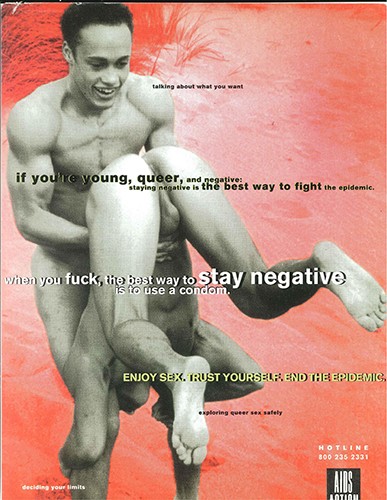
Designed and promoted by the AIDS Action Committee, these posters' graphic images and topics captured student attention and helped spread important information.
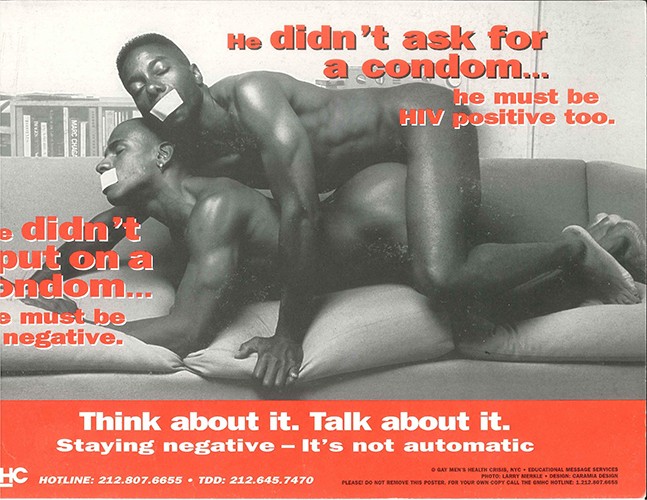
Designed and promoted by the AIDS Action Committee, these posters' graphic images and topics captured student attention and helped spread important information.
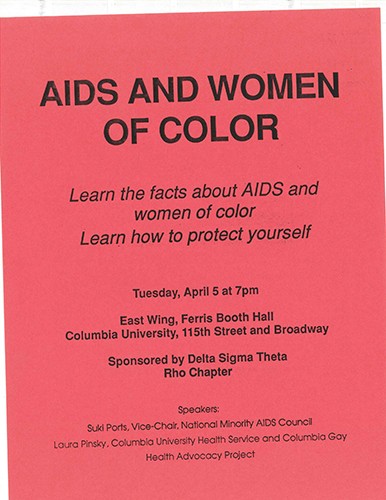
Promoting a session providing HIV/AIDS information specifically tailored to women of color. The session was co-hosted by Laura Pinsky of GHAP and Suki Ports, the Vice-Chair of National Minority AIDS Council.
"AIDS: Improving the Odds" Panel Discussion
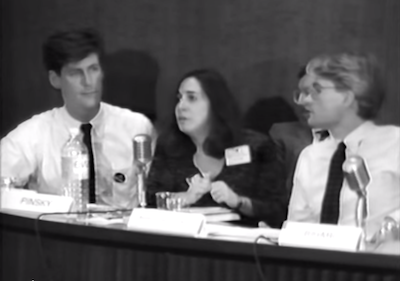
In 1987, Laura Pinsky and Paul Harding Douglas of GHAP moderated a panel discussion that brought together researchers, doctors, and other HIV/AIDS experts to meet with students and the community for open discussion.

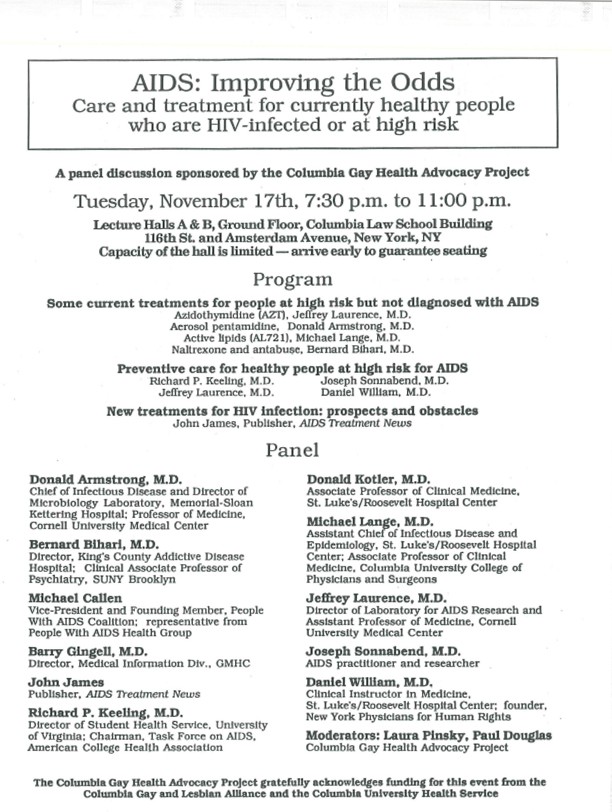
This program provided a list of speakers and the agenda.
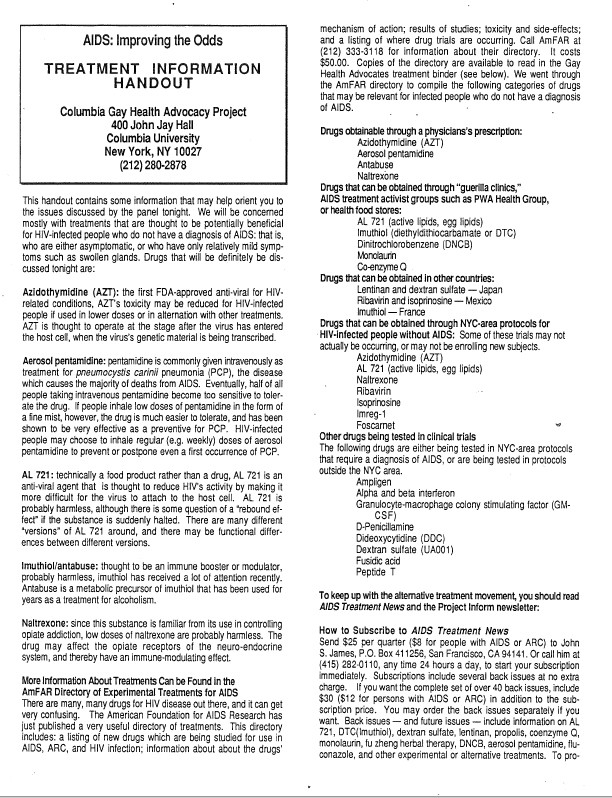
This handout provided information about various treatment options available, how to access them, and resources for further help and information.

Video was taken of the entire panel discussion, which was held in front of a full house. It is available in seven parts below:
Oral Sex Conference
On February 6, 1994, GHAP sponsored a conference entitled Oral Sex and Possible HIV Transmission. The Gay Men's Health Crisis (GMHC) co-sponsored the event, which was held at Columbia's Miller Theater with an audience of more than 500 attendees. The program consisted of a series of speakers presenting available scientific data, and a panel of community members discussing psychological, social, and educational aspects of the issue. There was extended time for questions and lively discussion from the audience.
A highlight of the conference was a presentation about the mechanics of transmission by oral sex. The speakers were Jeffrey Laurence, M.D., (New York Hospital-Cornell Medical Center), Alison Quayle, Ph.D. (Harvard University) and Peter Schlegel, M.D., and Gerard Ilaria, A.C.S.W. (New York Hospital-Cornell Medical Center).
Dr. Ilaria had conducted a study without funding, simply relying on the goodwill of colleagues and peers to provide the lab time and run the tests. The subjects in the study also volunteered their time. It was the kind of cooperation that often happened during the epidemic, because everyone was so hungry for answers and wanted to provide the correct information to their patients and the general public. Ilaria's study showed that there was a risk of passing HIV on to a sexual partner via pre-ejaculate fluid, even if orgasm and full ejaculation did not occur. This information provided a much clearer picture of what constituted safe sex and the risk factors associated with oral sex and penetrative sex.
The study was included in the press release that GHAP and GMHC published about the Conference.
AIDS Quilt Displayed at Columbia University
In February of 1995, over 2,000 panels of the AIDS Quilt were displayed at Columbia University. It was the largest display in New York since the one in Central Park in 1985.
